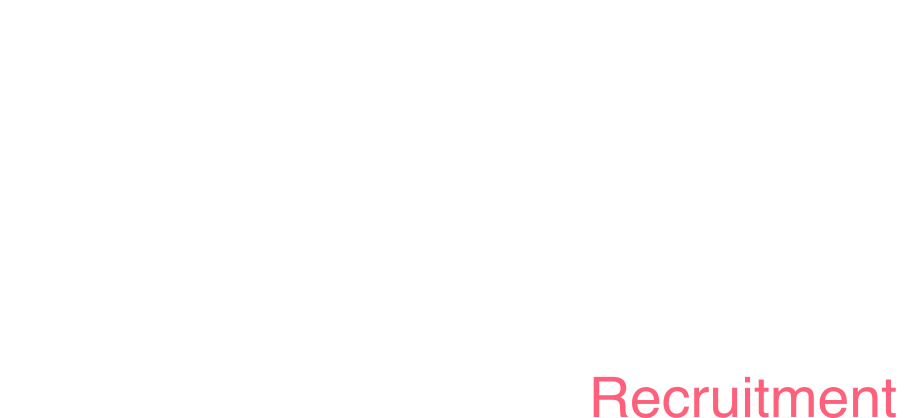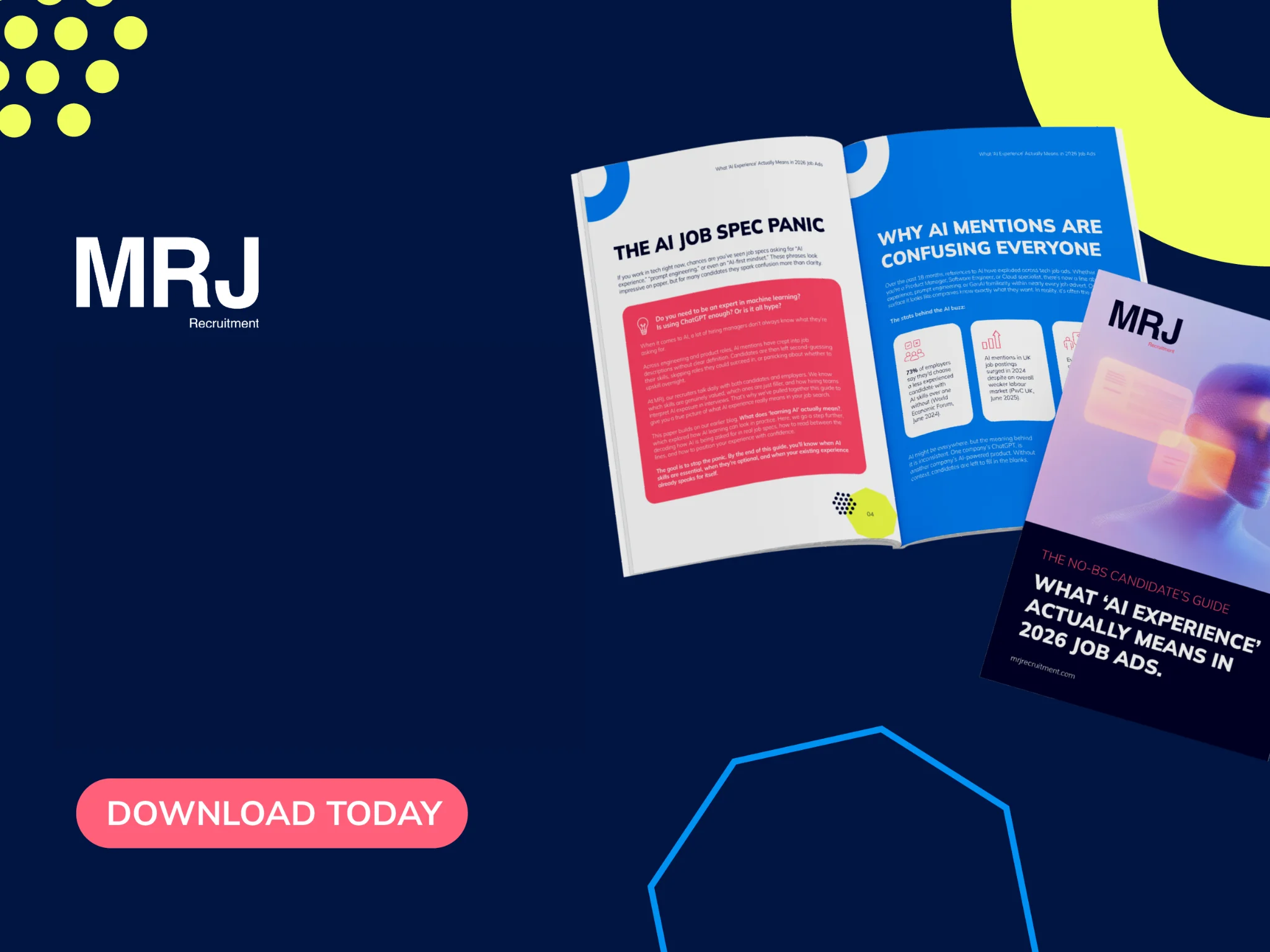How to Build the Right Software Team for Your Product Goals
21 Jul, 20258 MinutesHiring for your dev team shouldn’t start with a job title. It should start with what you’re ...

Hiring for your dev team shouldn’t start with a job title. It should start with what you’re trying to build.
Many fast-growing tech companies fall into the same trap: they know they need to ship a new platform, feature, or internal system, so they start with a list of roles. But without clarity on deliverables, timelines, and tech stack, you risk hiring for the completely wrong thing.
At MRJ, we take a different approach. We help founders and tech leaders reverse the brief. Instead of guessing at job specs, we ask what your product needs to achieve, and then we shape a hiring plan to match. This blog will help you do the same.
Here’s what you’ll learn:
- Why "we need a dev" isn’t a hiring strategy
- How to match tech roles to specific outcomes
- What product management recruitment looks like today
- Average pay rates and languages to look out for
- How MRJ maps what you're building to who you need
If you’re building something new but not sure who should do what, read on. We’ll help you make sense of it all.
Key Roles that Power High-Performing Software Teams
Once you know what problem you’re trying to solve, you then need to match that vision to the right skills. Here’s a breakdown of the core engineering roles that shape successful software delivery teams, what they do, and what to expect when hiring.
Product Owner
- The translator between business and build. They prioritise features, manage backlogs, and ensure your dev team isn’t building in a vacuum.
- Expect salaries between £60k and £90k for strong Product Owners with Agile experience.
- Ideal when you need clarity between user goals and delivery.
Explore Product Ownership recruitment
Fullstack Developer
- A flexible problem-solver who can build across the stack. Perfect for MVPs or lean teams that need to ship quickly.
- Key languages: JavaScript (React, Node.js), Python, TypeScript.
- Average salary: £55k–£85k depending on experience and stack complexity.
Data Engineer
- If your product needs robust reporting, smart features, or machine learning down the line, this is your person.
- Tools of the trade: Python, SQL, Spark, Airflow.
- Salary range: £65k–£100k. Often one of the harder roles to hire for due to demand.
Platform Engineer
- Lays the technical foundation: infrastructure, CI/CD, cloud environments. Critical if scalability and uptime matter.
- Skills: AWS, GCP, Docker, Terraform, Kubernetes.
- Typical salaries range from £70k to £110k+.
QA & Test Specialist
- QAs catch bugs before your customers do and build automated testing pipelines to keep releases smooth.
- Tools: Selenium, Cypress, Postman.
- Pay averages £45k–£70k. Invest early if stability is part of your product promise.
Getting the mix right depends on what you’re building, how fast you need to move, and where your in-house skills sit. It’s especially important when hiring remote engineers or building a hybrid setup. Forbes reports that while return-to-office trends are rising, hybrid tech teams remain the norm, highlighting the importance of clear role definitions.
We help you map this out properly. It’s easy to focus on filling open roles, but real value comes from building teams that are set up to collaborate, execute, and grow.
What a Strong Software Build Looks Like in Practice
Let’s say you’re building a data-heavy B2B SaaS product aimed at scale. You want self-serve onboarding, rich analytics, and tight security baked in. Here’s how that might break down into your engineering jobs hiring plan:
Tech stack example:
- Backend: Golang (fast, scalable, ideal for APIs)
- Frontend: React (great for dynamic interfaces)
- Data: Python for transformation, SQL for querying
- Infrastructure: AWS, Docker, Terraform
- Testing: Cypress for frontend, Postman for API checks
Team structure:
- Product Owner: Sets roadmap and works with stakeholders to prioritise what matters.
- 2x Fullstack Devs: Ship features quickly, adapt across the stack, unblock each other.
- Data Engineer: Builds pipelines, supports reporting and machine learning readiness.
- Platform Engineer: Automates infrastructure, sets up CI/CD, ensures environments are production-ready.
- QA: Catches regressions early and builds automated tests.
This would be a lean but powerful team to help you quickly build a MVP fast without piling on risk later. And it’s one we’ve seen work time and time again for high-growth SaaS companies. McKinsey research supports this, highlighting how defined team roles and agile delivery models directly improve productivity and speed in digital product teams.
If you’re scaling in a hybrid or remote-first environment, clear accountability matters more than ever. These are the types of roles that build resilience into your platform from day one.
And crucially, MRJ helps teams like yours shape this plan upfront, not after the fact. We’ll tell you what roles to prioritise, when to bring them in, and where to flex depending on your existing team.

How MRJ Helps You Build the Right Team
We’re not just here to fill gaps. We’re here to help you make the right hires at the right time.
At MRJ, we work with tech leaders to reverse-engineer their hiring plans based on outcomes, not assumptions. We ask the questions that internal teams often overlook: What’s the user journey? What does “launch-ready” mean to your investors? Where are your biggest risks? Who can fix those risks?
Here’s how we do it:
- We start with what you're building, then scope the skills and structure needed to deliver it.
- We identify roles you might not have considered (but should).
- We link your hiring plan to your product milestones, so roles align with delivery, not just headcount.
Whether you use our Standard recruitment service or go deeper with Talent as a Service, we’ll help you:
- Avoid wasted spend on the wrong roles
- Hire based on skills and product need, not title
- Scale faster with less guesswork
If that sounds like what you need, we should talk. Contact us to start the conversation.
FAQs: Planning Your Software Team Hiring
What roles do I need to build a SaaS product?
It depends on what you’re building. But when it comes to engineering recruitment, most SaaS builds include at least one Fullstack Developer, a Product Owner to manage delivery, and either a Platform Engineer or Data Engineer, depending on your needs. QA should come in early too, because stability matters from day one.
How much should I pay a Fullstack Developer in the UK?
Rates vary by location, stack, and experience, but typical salaries sit between £55k and £85k. Developers with experience in Golang or TypeScript can command higher rates due to demand.
Should I hire a QA early or late in the build?
Always earlier than you think. Waiting until just before launch is a risk. A good QA will improve stability, reduce technical debt, and speed up future development with automated tests.
Can one person cover multiple roles in a small team?
Sometimes. In early-stage builds, Fullstack Developers often wear multiple hats. But expect trade-offs. Clarity on responsibilities is key, especially in hybrid tech teams or remote setups.
Need help mapping the right structure? Speak to MRJ about your build and we’ll help you shape the right team from day one.
Smarter Product Management Recruitment Starts with the Build
It’s easy to default to job titles. But smart hiring starts with your end goal.
Whether you’re building a platform from scratch or iterating on something that’s already live, your product’s needs should drive every hiring decision. That’s how you avoid dead weight, wasted spend, and slow dev cycles.
The shift to solutions-first hiring doesn’t just make you faster. It makes you sharper. You make hiring decisions based on what your product actually needs, not vague job titles. You build teams that ship, adapt, and stick around.
At MRJ, that’s how we work. We support tech leaders in shaping hiring plans that match the product vision, and then we find the right people to make it real.
Ready to rethink your hiring approach? Let’s talk. We’ll help you scope what you need, when you need it, and who’s best to make it happen.




